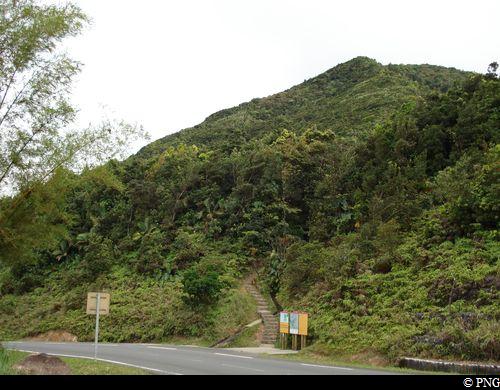
Mamelle de Pigeon
18 points of interest

 Geology
GeologyHow the Mamelles were formed ...
While it is believed that the Mamelles were formed only relatively recently, between around 1-2 million years ago, the northern chain of which they are a part include the island's ancient volcanoes.
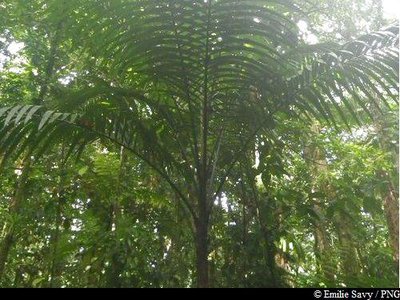
Palmier montagne - Emilie Savy / PNG  Flora
FloraThe Sierran palm
Prestaea montana is a member of the Arecaceae family. Despite its height, the Sierran palm is not a tree. Much like ferns, it does not have a trunk but a stipe. It can live in both hygrophilous forest, where it can reach a height of ten meters, and at altitude, where it grows no taller than two metres.
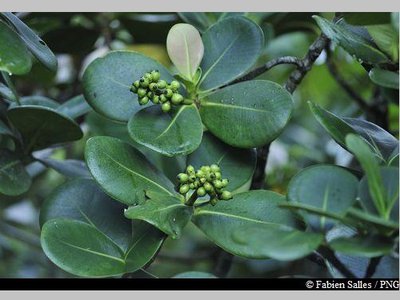
Clusia mangle - Fabien Salles / PNG  Flora
FloraClusia mangle
Native to the Lesser Antilles, Clusia mangle belongs to the Clusiaceae family. It thrives at 800 metres above sea level, with strong winds and constant humidity. It is a shrub with leathery, fleshy and shiny leaves. The fruits (between 10-20mm) resemble large yellow-greenish olives.
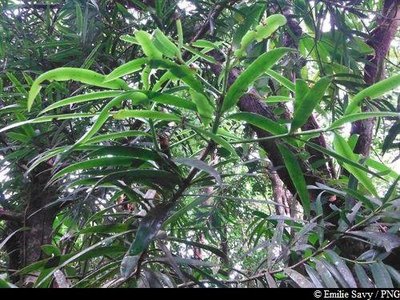
PNG  Flora
FloraThe Yucca Plum Pine
A member of the Podocarpaceae family, Podocarpus coriaceus is also known as the Yucca Plum Pine. Closely related to conifers, it is an average-sized tree, measuring around 10-16 metres. It has leathery leaves that resemble an oleander's: they are dark green on top, span between 6 and 15 cm and have virtually no petiole. While its flowers are discreet, its brown-coloured seeds in their floral buds are particularly eye-catching. It has a thin layer of bark. This species is found throughout the West Indies and flowers mainly in December and January.
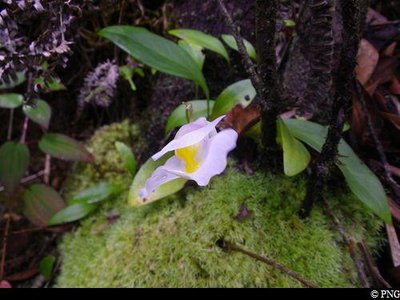
Utricularia alpina - PNG  Flora
FloraUtricularia alpina
Utricularia alpina is a terrestrial or epiphytic plant. It is found amid the upper layers of hygrophilous or transitional forests, or on formations at altitude. It is a carnivorous plant with small snares - stomach-like contraptions - hidden amongst its roots which help it to digest all kinds of tiny insects. Flowering mainly occurs between January and August.
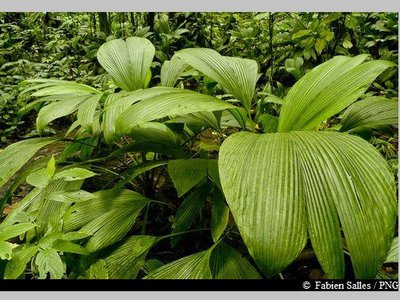
"Ailes à mouche" - Fabien Salles / PNG  Flora
FloraAiles à mouche
A member of the Cyclantaceae family, the French common name of Asplundia rigida translates literally as "fly wings" on account of its similarity with the insect. A typical plant of hygrophilous (moisture-loving) forest undergrowth, there are three species of Asplundia: two terrestrial and one epiphytic and lianescent (vines climbing from aerial routes).
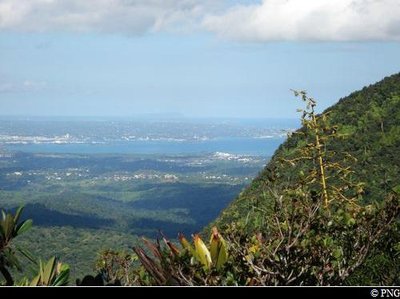
Point de vue - PNG  Viewpoint
ViewpointViewpoint
Pleasant open views of the north of Basse Terre.
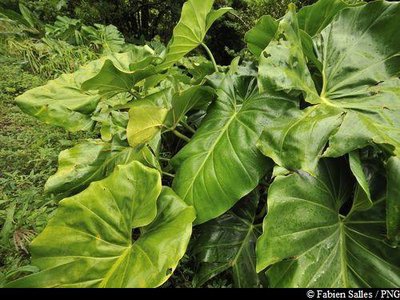
Siguines blanches - Fabien Salles / PNG  Flora
FloraGiant Philodendron
The Giant Philodendron (Philodendron giganteum) is an epiphytic or terrestrial species that flourishes in humid or shady areas.
It grows equally well from the earth as it does on rock or in trees. It develops many very long aerial routes, which are used in basketry. It has large, dark green leaves that are fleshy and shiny to the eye. Each leaf is supported by a large petiole (between 0.6 and 1.5 metres), which grows from a large, yet short stem resting on trunks or rocks.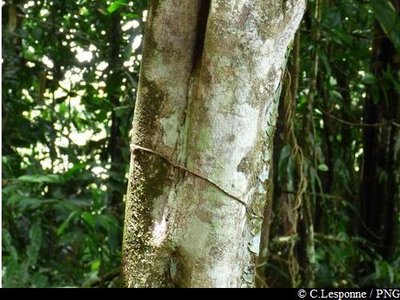
PNG  Flora
FloraMiconia mirabilis
Miconia mirabilis features a fluted trunk and white bark. As it is a light-loving tree, this pioneer has hard wood that is distinctive of open areas. It is often found on paths alongside tree ferns or trumpet trees.
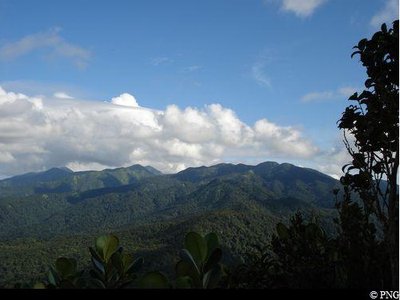
point de vue sur les crêtes depuis la Mamelle de Pigeon - PNG  Viewpoint
ViewpointViewpoint
Viewpoint
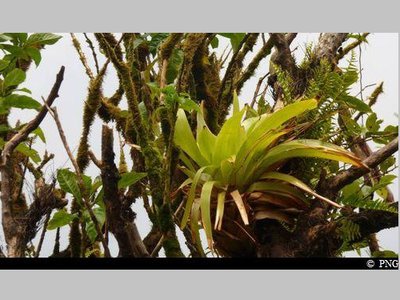
"Ananas bois" - PNG  Flora
FloraGlomeropitcairnia penduliflora
Commonly known in Creole as "Zanana mawon", Glomeropitcairnia penduliflora is a member of the Bromeliaceae family. It is a tropical grass, epiphyte on tree branches, or terrestrial. It has straight, tough and thick leaves which, arranged in the format of rosettes, take in substantial levels of water and are even home to some frogs. It features a floral scape in the middle.
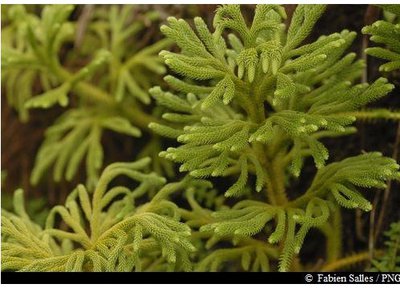
Lycopodes - Fabien Salles / PNG  Flora
FloraClubmosses
There are numerous species in the Lycopodium genus. Botanically speaking, they are similar to ferns and spikemosses. As pioneer plants, the clubmosses are the first to develop after volcanic eruptions. Thanks to the abundant spores that are produced in their small and densely-packed refracted ears, found at the ends of the branches, they can multiply freely.
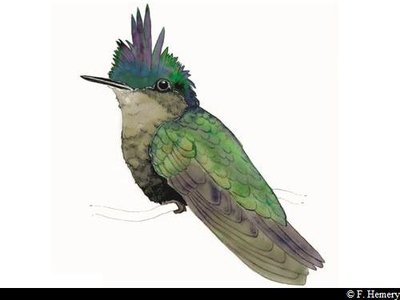
Colibri huppé - F. Hemery  Fauna
FaunaAntillean crested hummingbird
The Antillean crested hummingbird (Orthorhyncus cristatus), also known as "Foufou" in Créole, is a small bird of around 8 cm, with iridescent green plumage and a blackish breast. This hummingbird is sexually dimorphic, a trait that can be witnessed by the crest on the male's head. Feeding mainly on nectar, it helps to pollinate plants by moving from flower to flower.
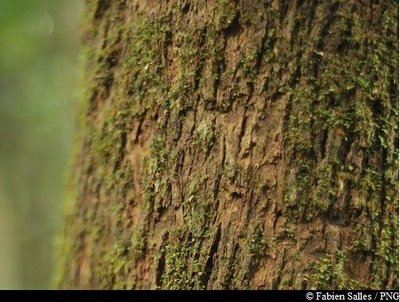
"Bois bandé" - Fabien Salles / PNG  Flora
Flora"Bwa bandé"
Richeria grandis belongs to the Phyllanthaceae family. It is a large variety, distinctive for its tough leaves and reddish-brown bark that so often falls victim to rogue extraction. Also known as "bwa bandé" in Créole, it is renowned for its aphrodisiac qualities. Its wood is used as timber or in carpentry. It has very distinctive, green, grape-like fruits which form small pods and form copiously on its branches.
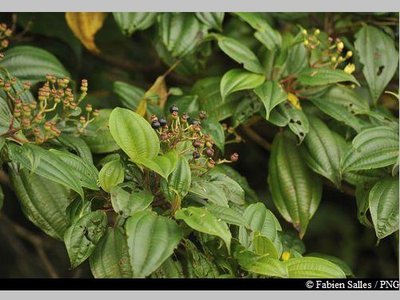
Fuschia montagne - Fabien Salles / PNG  Flora
FloraCharianthus alpinus
Charianthus alpinus is a member of the Melastomataceae family and endemic to the Lesser Antilles. Ranging from 1-2 metres tall, its leaves - made up of five basal veins - are particularly eye-catching, while its flowers regularly attract hummingbirds.
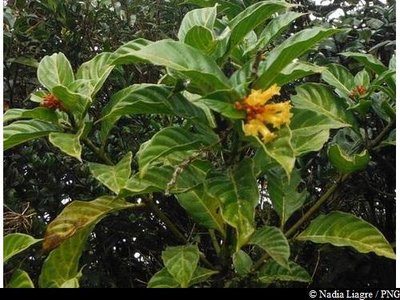
"Bois Foufou" - Nadia Liagre / PNG  Flora
FloraPalicourea crocea
A member of the Rubiaceae family, Palicourea crocea is a shrub that can grow between 2-4 metres tall but that only reaches 50cm at altitude. The common local name for this plant, Foufou, derives from the name of the hummingbirds that are attracted to its large and colourful inflorescences.

Fougère calumet - PNG  Flora
FloraDicranopteris pectinata
Dicranopteris pectinata belongs to the Gleicheniaceae family. It is a pioneer species that thrives in an open and sunny environment. It tends to colonise landslide areas, the edges of forest roads and rivers and, more generally, any surfaces that have been severely stripped back in wet areas. Its network of underground roots plays a key role in consolidating the topsoil.
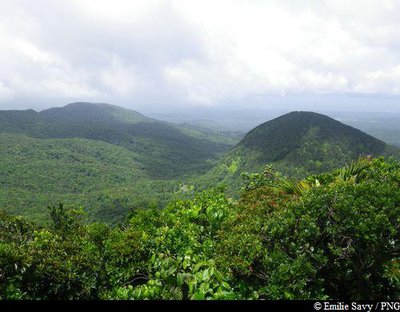
Sommet de la Mamelle de Pigeon - Emilie Savy / PNG  Summit
SummitSummit
Courtesy of the landscaped promontory, the summit offers some extensive views of the area.
The earth is carpeted with ferns (Dicranopteris pectinata).
Description
Hiking trail colour: yellow
Starting from the parking area of Col des Mamelles, cross the road and read the National Park information boards at the start of the trail. Start by climbing the paved stairway that leads into the forest.
After walking for 10 minutes, the cobblestones give way to a slippery trail. Keep on the same path until you reach the summit, where you can admire a panorama from the promontory. Take the same route back to return to Col des Mamelles.
- Departure : Col des Mamelles, Petit-Bourg
- Arrival : Col des Mamelles, Petit-Bourg
- Towns crossed : Pointe-Noire, Bouillante, and Petit-Bourg
Altimetric profile
Recommandations
As Guadeloupe is prone to natural risks, extra care should be taken in this natural environment. For the benefit of all hikers, responsible behaviour is very important.
Pay attention to cars on Route RD23, as it is a major road.
Warning : the parking area is unsupervised.
Information desks
Maison de la Forêt
RD 23 - Route de la Traversée, 97170 Petit-Bourg
Opening hours :
- In low season (May 1 to June 30 and September 1 to October 31) : every day (except weekends) from 9 am to 4.30 pm.
- In high season (November 1 to April 30 and from July 1 to August 31) : every day from 9 am to 4.30 pm ; sunday from 9 am to 12.30 pm.
Services: reception, permanent exhibition, free parking. Building and restrooms accessible to people with reduced mobility. Picnic area nearby.
Please note : parkings are not supervised.
Localisation GPS : Lat: 16,17600 N - Lng: 61,69280 W.
Access and parking
GPS coordinates of the start point : Lat : 16,18147 N - Long : 61,73631 W.
On Route de la Traversée (RD 23), the parking area for the start of the trail is located at Col des Mamelles.
-> If coming from Côte-sous-le-Vent (Bouillante / Pointe-Noire): stop at the parking area at Col des Mamelles.
-> On the other side (Prise d'Eau, Petit Bourg): you will need to drive for around 5 km after Maison de la Forêt to find the parking area.
Parking :
More information
Source
Report a problem or an error
If you have found an error on this page or if you have noticed any problems during your hike, please report them to us here:


